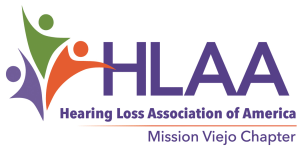Hearing Assistive Technology
Download or view the Assistive Technology Guide
Hearing Assistive Technology, or HAT as it is commonly referred to as a technology that can help in various listening situations.
Often, a hearing aid or an implant is not enough in certain situations. In such cases, there are technologies that are designed to help people with hearing loss. These are designed to enhance telephone communication, TV reception, ensure an effective smoke alarm, or listen in various kinds of public venues. Your hearing professional should evaluate your need for one or more of these devices and direct you to the appropriate vendor.
Here is some basic information on hearing assistive devices.
As a matter of policy, HLAA does not endorse one technology over another. We provide information about all types of technology to our members and anyone with hearing loss looking for help.
Have you ever had difficulty hearing or understanding:
in meetings?
in places of worship?
in theaters or movies?
in restaurants?
with shopping transactions like at a pharmacy or bank?
in public places such as airports or in municipal buildings?
In those situations, an assistive listening device can help.
Hearing assistive technology such as audio loops (or hearing loop), FM, and infrared systems are like binoculars for the ears and work with or without hearing aids. These are assistive listening devices that help get past the obstacles to hearing.
These devices help us to hear and understand better in many situations where the acoustics are poor, background noise is bothersome, and there is a long distance from the speaker.
In public places such as theaters, listening systems are required under the Americans with Disabilities Act (ADA) to make programs and services accessible. But, you must ask for accommodation.
For more detail about each type of system/device click on the link.
- What is an audio or hearing loops
- What is an infrared system/device?
- What is an FM system /receiver/ device
Credit: Hearing Loss Association of America ( HLAA )
